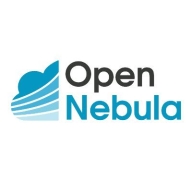


OpenNebula and Turbo360 compete in the cloud computing and serverless market. OpenNebula is favored for its pricing and deployment simplicity, while Turbo360 is preferred for its robust features and support despite higher costs.
Features: OpenNebula offers powerful virtualization management, cost efficiency, and hybrid cloud capabilities. Turbo360 provides serverless application monitoring, resource management, and integrated analytics.
Ease of Deployment and Customer Service: OpenNebula is noted for its straightforward deployment and simplicity in managing virtual environments. Turbo360 provides extensive support during its complex deployment process, which results in a highly optimized serverless environment and features dedicated customer service.
Pricing and ROI: OpenNebula's low setup cost is appealing for budget-conscious organizations, promising reasonable ROI. Turbo360, with higher initial costs, offers substantial long-term value and ROI through advanced functionalities that optimize and scale serverless operations efficiently.


IBM Turbonomic offers automation, planning, and right-sizing recommendations to streamline resource management, improve efficiencies, and optimize costs across virtualized environments and cloud platforms.
IBM Turbonomic is valued for its capability to optimize resource allocation and monitor virtual environments efficiently. It facilitates automated decision-making in VM sizing, load balancing, and cost optimization for both on-premises and cloud deployments. Users can leverage insights for workload placement, ensure peak performance assurance, and effectively right-size across VMware and Azure. The ongoing transition to HTML5 aims to improve visual and navigational ease, while expanded reporting features are anticipated. Opportunities for improved training, documentation, and integrations enhance platform usability and functionality.
What Are the Key Features?In finance, IBM Turbonomic aids in maintaining platform efficiency during market fluctuations. Healthcare organizations leverage its capability for resource optimization during high-demand periods to enhance patient care support. Retailers use it for planning in peak seasons, ensuring resources align with fluctuating demand to maintain performance continuity.
OpenNebula provides the most simple but feature-rich and flexible solution for the comprehensive management of virtualized data centers to enable private, public and hybrid IaaS clouds. OpenNebula interoperability makes cloud an evolution by leveraging existing IT assets, protecting your investments, and avoiding vendor lock-in.
OpenNebula is a turnkey enterprise-ready solution that includes all the features needed to provide an on-premises (private) cloud offering, and to offer public cloud services.
Turbo360 (Formerly Serverless360) is an advanced Cloud Management platform that empowers you with significant Azure Cost savings and Infra Monitoring for complex Azure Environments. Our customers have experienced annual savings of up to 30% through advanced cost monitoring, granular analysis, optimization insights, and reduced incident resolution time by 80% through holistic infra monitoring across multiple Azure resources with business context. Also, our platform stands out by offering all the necessary features for incorporating FinOps practice into your organization, ensuring an accurate and granular source of truth about costs for all your stakeholders. By seamlessly offering infrastructure monitoring and cost management in one place, we aim to help maximize your ROI on Azure investments.
Our Core features:
We monitor all Cloud Management reviews to prevent fraudulent reviews and keep review quality high. We do not post reviews by company employees or direct competitors. We validate each review for authenticity via cross-reference with LinkedIn, and personal follow-up with the reviewer when necessary.